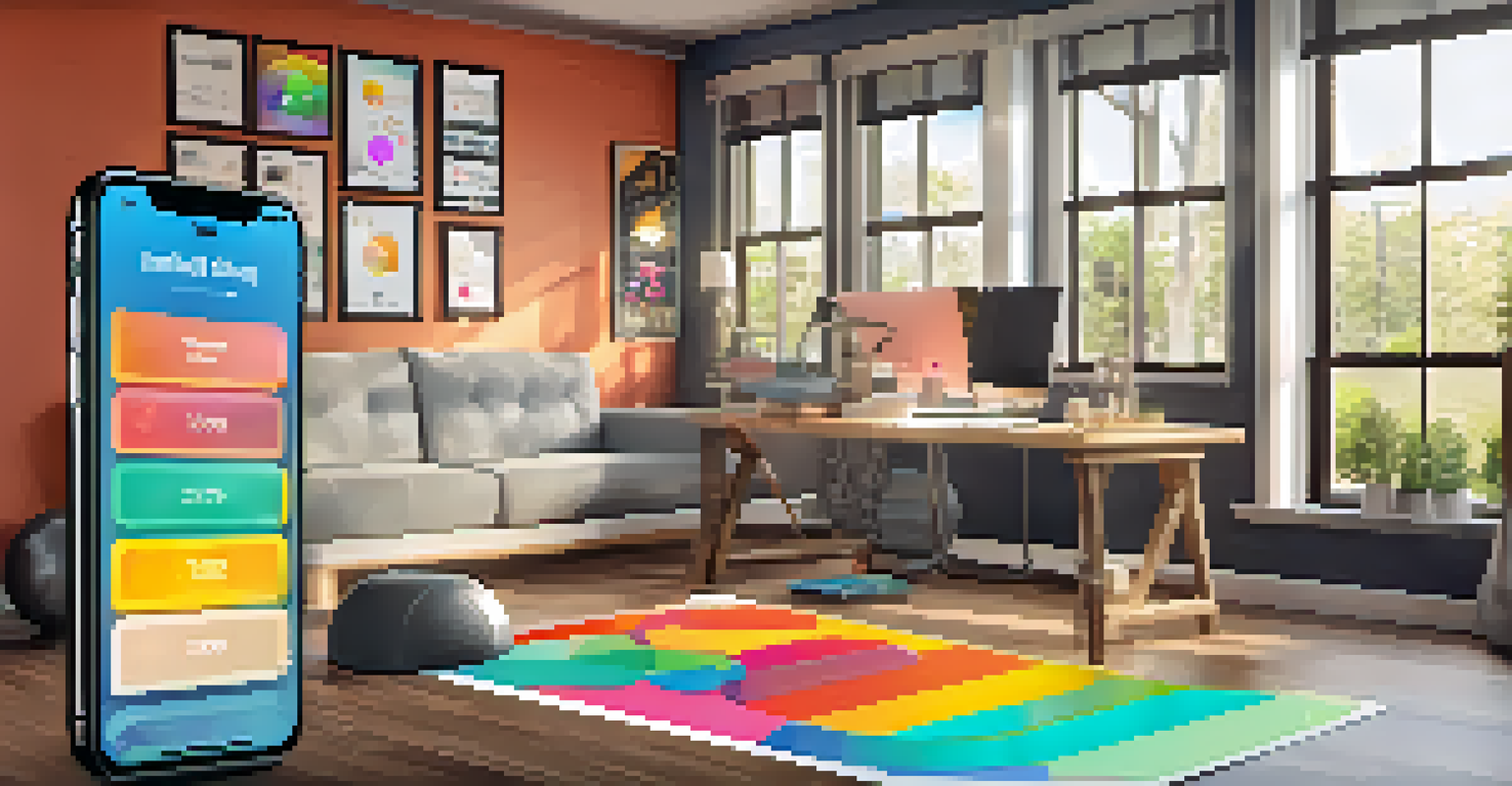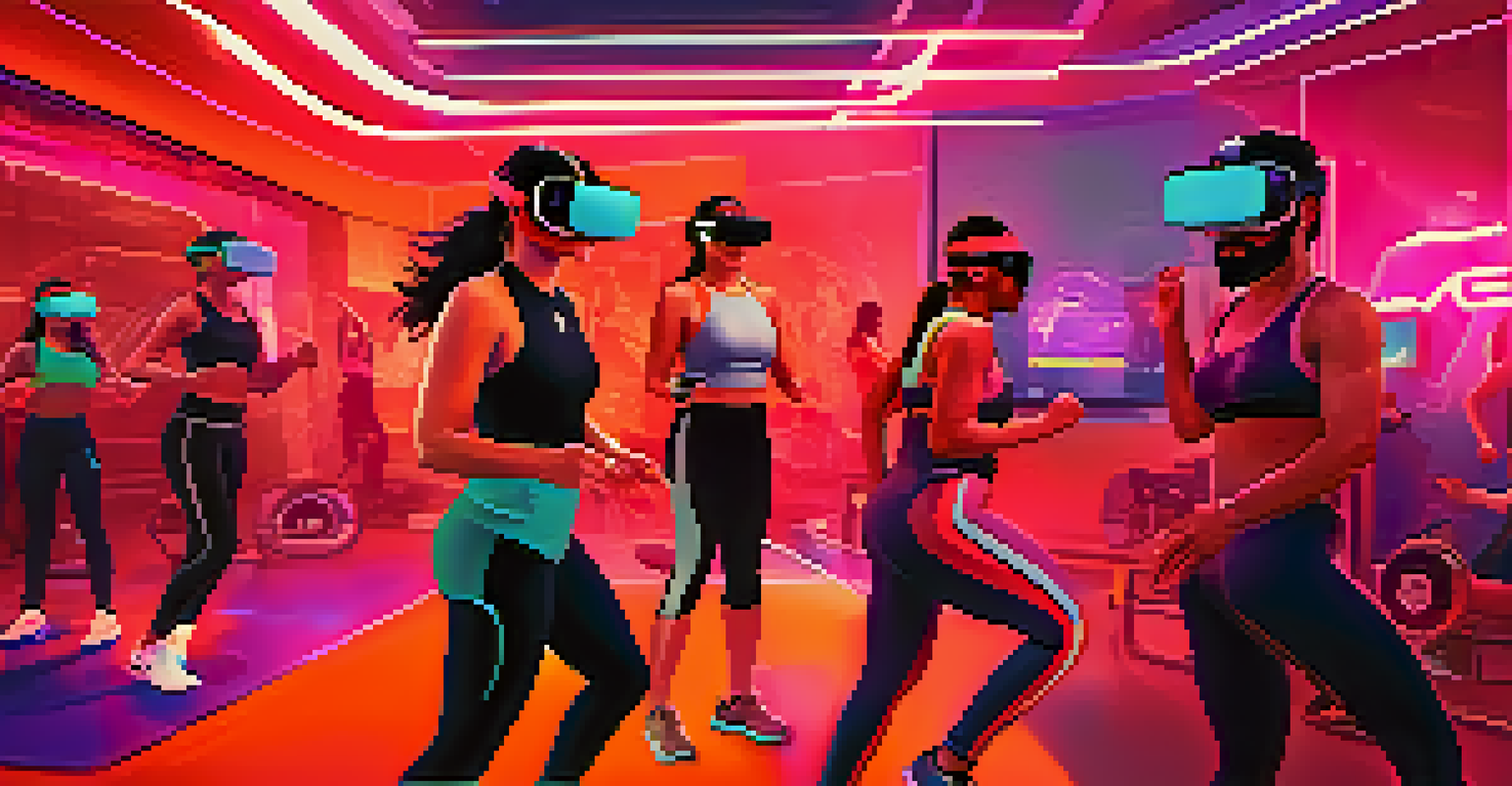The Role of Gamification in Health and Wellness Apps

Understanding Gamification and Its Benefits
Gamification refers to the use of game-like elements in non-game contexts. In health and wellness apps, this can include features like points, badges, and leaderboards. By incorporating these elements, developers aim to make the experience more engaging and motivating for users.
The greatest rewards come from the greatest challenges.
The benefits of gamification in health apps are manifold. It can drive user engagement, encourage regular use, and improve overall health outcomes. When users feel rewarded for their efforts, they are more likely to stick with their health goals.
Moreover, gamification can foster a sense of community among users. When people share their achievements or compete with friends, they create a supportive environment that encourages healthier behaviors.
How Gamification Increases User Engagement
Engagement is crucial for the success of any app, especially those focused on health and wellness. Gamification strategies, such as setting challenges or offering rewards, can significantly boost user involvement. When people are actively participating, they tend to achieve better results.

For instance, fitness apps that allow users to earn rewards for completing workouts or achieving milestones keep users motivated. This not only enhances the user experience but also helps users track their progress in a fun way.
Gamification Boosts User Engagement
By incorporating game-like elements, health apps enhance user motivation and participation.
Additionally, gamification taps into our natural desire for competition and achievement. When users can see how they rank against others or compare their performance, it can spark a healthy competitive spirit that drives them to push their limits.
Personalization in Gamification Strategies
Personalization is key in making gamification effective. Health apps that tailor challenges and rewards to individual users’ preferences are more likely to resonate with them. This approach makes the experience feel unique and relevant.
Gamification is not about playing games; it's about using game elements to engage people in activities they may not otherwise find interesting.
For example, if an app knows a user enjoys running, it might offer running-related challenges or rewards. This targeted approach fosters a deeper connection between the user and the app, making them more likely to engage consistently.
Moreover, personalized gamification can help users set realistic goals. When users receive customized feedback and encouragement, they are more likely to stay committed to their health journeys.
The Impact of Social Interaction on Motivation
Social interaction is a powerful motivator, and gamification can leverage this by creating community features within health apps. Users can share achievements, offer support, and even challenge each other to friendly competitions. This sense of belonging can enhance motivation and commitment.
For instance, apps that allow users to form teams or groups can create a supportive environment where users encourage one another. This connection not only makes the journey more enjoyable but also holds users accountable.
Personalization Enhances Experience
Tailoring challenges and rewards to individual preferences makes gamification more effective.
Additionally, social features often lead to increased user retention. When users feel part of a community, they are less likely to abandon their health goals, resulting in better long-term outcomes.
Examples of Successful Gamification in Health Apps
Several health and wellness apps have effectively employed gamification strategies. For instance, MyFitnessPal utilizes a point system to reward users for logging food and exercising. This not only makes tracking enjoyable but also reinforces healthy habits.
Another great example is Fitbit, which encourages users to achieve daily step goals and compete with friends. By turning fitness into a friendly competition, users are more likely to stay active and engaged.
These examples show how gamification can transform the mundane task of tracking health into an engaging activity. When users are motivated by fun elements, they are more likely to embrace healthier lifestyles.
Challenges and Limitations of Gamification
While gamification has many benefits, it also faces challenges and limitations. Not all users respond positively to gamified elements, and some may even find them overwhelming. It's essential for developers to strike a balance between motivation and pressure.
Additionally, gamification may not address the underlying issues that affect users' health behaviors. For instance, simply offering rewards for exercise doesn't tackle factors like mental health or access to resources. A holistic approach to health and wellness is still vital.
Social Interaction Fuels Motivation
Community features in health apps create support networks that boost user commitment and retention.
Furthermore, overly complex gamification systems can lead to frustration. Developers need to ensure that their gamification strategies enhance the user experience rather than complicate it.
Future Trends in Gamification for Health Apps
Looking ahead, the future of gamification in health and wellness apps seems promising. With advancements in technology, we can expect more personalized and immersive experiences. Virtual and augmented reality could play a larger role in making health activities more engaging.
Additionally, integrating artificial intelligence could help tailor gamification strategies even further. By analyzing user behavior, AI can suggest personalized challenges and rewards that keep users motivated.

As these technologies evolve, gamification will likely become more sophisticated, making health and wellness more accessible and enjoyable for everyone. This evolution could lead to a healthier society overall.